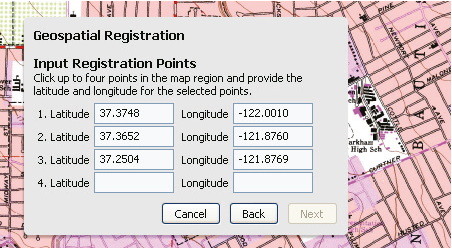
How to create a geospatial PDF using Acrobat 9
By Adobe – June 18, 2009
You can create a geospatial PDF in one of two ways:
- Open a geospatially enabled TIFF (GeoTIFF) or JPEG 2000 file
- Georegister a PDF map or scan of geospatial data
When you open an imported file, measurements, point position, and length are displayed in geographic coordinates, which you can change, measure, and mark up. You can also assemble a PDF map from a variety of sources.
Open GeoTIFF and JPEG 2000 files
GeoTIFF files and JPEG 2000 files are raster images that you can import as new documents or as new layers to an existing document. Acrobat preserves the geospatial coordinates embedded in the file. These files retain their geospatial data when they are imported. If you import these files to existing documents, their coordinate system is converted to the coordinate system of the document.
- Choose File > Create PDF > From File.
- Select the geospatially enabled file to import.
- Select settings, and then click OK.
Import shapefiles
You can import a shapefile as a new layer to an existing PDF. The shapefile must overlap with the current PDF map; otherwise, it is not imported. If it overlaps only partially, only the part that overlaps the current PDF is imported.
A shapefile consists of several files with differing file name extensions. Acrobat requires both the SHP file and the DBF file for importing.
- Open a PDF map, and choose View > Navigation Panels > Layers.
- Select Option on the Layer sidebar and click Import As Layer.
- Browse to the SHP file and select it.
- Click Settings and change the Line Properties to a solid line and the line color to blue.
Georegister a PDF map
Georegistration enables you to take any PDF map and add coordinates that map to real-world locations. To georegister a map, you need the boundary coordinates of the map (latitude and longitude). You also need the
projection scale on which the map is based. With this information, Acrobat can accurately transform the map to WGS 1984, the standard reference frame for earth.

